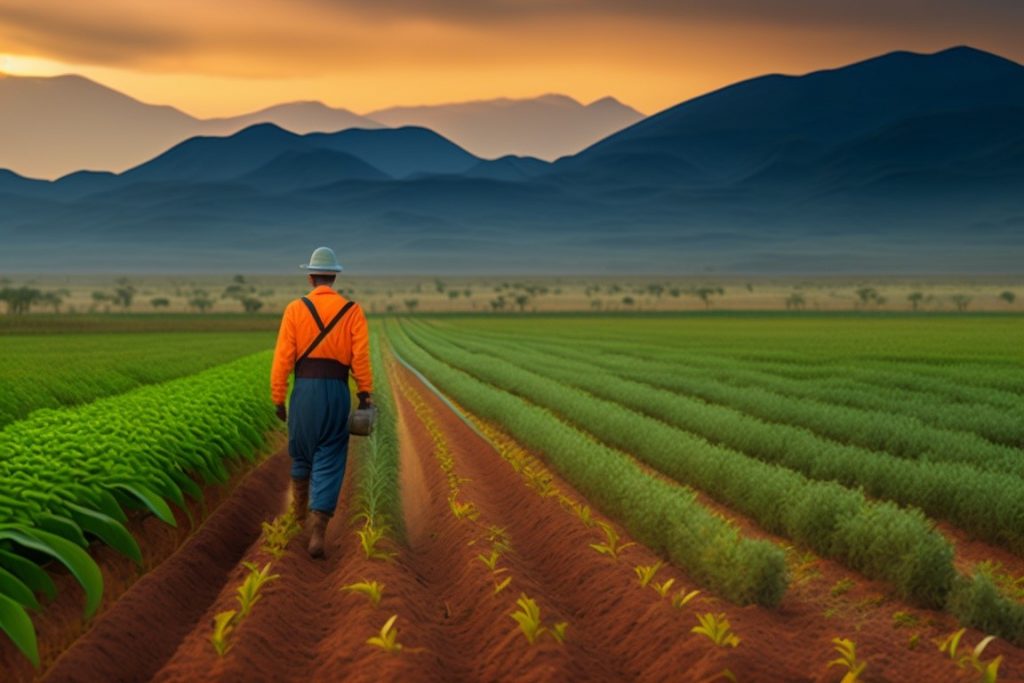Introduction
In the realm of agriculture and water management, the terms “Irrigation” and “Sustainable Irrigation” are often used interchangeably. However, there are significant distinctions between the two concepts that have crucial implications for the environment, society, and the future of agriculture. Understanding these differences is essential to promote responsible water use, preserve natural resources, and ensure the long-term viability of agricultural practices. In this blog post, we will delve into the disparities between irrigation and sustainable irrigation, exploring the key principles, practices, and benefits of sustainable irrigation.
Irrigation: An Overview
Irrigation is a centuries-old practice of artificially supplying water to crops to meet their water requirements. It involves diverting water from natural sources, such as rivers, lakes, or underground aquifers, and distributing it across agricultural fields through various methods, including canals, sprinklers, or drip systems. The primary goal of irrigation is to supplement natural rainfall, particularly in regions with limited or unreliable precipitation, to enhance crop growth and ensure adequate yields.
The Need for Sustainable Irrigation
While traditional irrigation methods have played a vital role in supporting agriculture, they often suffer from drawbacks that can have adverse effects on the environment and society. Issues such as water scarcity, inefficient water use, soil degradation, depletion of groundwater resources, and energy consumption have raised concerns about the sustainability of conventional irrigation practices. This has led to the emergence of sustainable irrigation as an alternative approach that seeks to address these challenges and promote more responsible water management.
Principles of Sustainable Irrigation
Sustainable irrigation embodies a set of principles and practices aimed at optimizing water use, conserving resources, and minimizing negative environmental impacts. Let’s explore some key principles that differentiate sustainable irrigation from conventional methods:
- Water Conservation: Sustainable irrigation focuses on maximizing water use efficiency through techniques like drip irrigation, precision application methods, and soil moisture monitoring. By minimizing water losses due to evaporation, runoff, and deep percolation, sustainable irrigation ensures optimal water utilization.
- Resource Efficiency: Sustainable irrigation aims to minimize energy consumption, chemical inputs, and other resources associated with irrigation. Implementing energy-efficient irrigation systems, using organic fertilizers, and adopting integrated pest management practices are some ways to enhance resource efficiency.
- Environmental Protection: Sustainable irrigation considers the preservation of ecosystems, biodiversity, and water quality. It emphasizes the use of environmentally friendly practices, such as water recycling, erosion control, and the protection of natural habitats, to minimize negative ecological impacts.
- Climate Resilience: Sustainable irrigation incorporates strategies to adapt to the challenges posed by climate change. This may involve implementing technologies like weather forecasting, climate-responsive irrigation scheduling, and promoting drought-tolerant crop varieties.
Benefits of Sustainable Irrigation
Embracing sustainable irrigation practices brings numerous benefits that extend beyond individual farms. Here are some key advantages:
- Water Security: By improving water use efficiency and minimizing wastage, sustainable irrigation helps secure water supplies for agriculture, even in water-stressed regions.
- Environmental Conservation: Sustainable irrigation practices contribute to the preservation of aquatic ecosystems, reduction of water pollution, and conservation of natural resources.
- Enhanced Crop Productivity: Optimizing water application and nutrient management through sustainable irrigation techniques can lead to improved crop yields and quality.
- Economic Sustainability: Sustainable irrigation practices can lead to cost savings through reduced water and energy consumption, improved resource management, and increased farm productivity.
Role of Sustainable irrigation in SDG’s
Sustainable irrigation plays a crucial role in achieving the Sustainable Development Goals (SDGs) outlined by the United Nations. The SDGs are a comprehensive set of global objectives aimed at addressing pressing social, economic, and environmental challenges to create a sustainable future for all. Let’s explore the role of sustainable irrigation in contributing to the SDGs.
- Firstly, sustainable irrigation directly supports SDG 2: Zero Hunger. By optimizing water use and enhancing crop productivity, sustainable irrigation helps ensure food security and promotes sustainable agriculture. It enables farmers to produce higher yields, diversify crops, and reduce post-harvest losses, ultimately contributing to ending hunger and achieving food sovereignty.
- Furthermore, sustainable irrigation contributes to SDG 6: Clean Water and Sanitation. It focuses on efficient water use, reducing water pollution, and protecting water resources. By implementing sustainable irrigation practices, such as precision irrigation and water recycling, farmers can minimize water wastage and preserve water quality, ensuring access to clean water for both agricultural and domestic purposes.
- Sustainable irrigation also aligns with SDG 13: Climate Action. As climate change poses significant challenges to water availability, sustainable irrigation practices help build climate resilience in agriculture. By adopting climate-responsive irrigation techniques, improving water use efficiency, and promoting drought-tolerant crops, sustainable irrigation contributes to mitigating the impacts of climate change and reducing greenhouse gas emissions.
- Lastly, sustainable irrigation supports SDG 15: Life on Land. It emphasizes the conservation and restoration of ecosystems, including wetlands and biodiversity-rich areas. Sustainable irrigation practices prioritize the protection of natural habitats, reduce soil erosion, and minimize the use of agrochemicals, promoting sustainable land management and preserving terrestrial ecosystems.
It plays a vital role in advancing multiple SDGs, including Zero Hunger, Clean Water and Sanitation, Climate Action, and Life on Land. By promoting responsible water use, enhancing agricultural productivity, and safeguarding natural resources, sustainable irrigation contributes to the global efforts of creating a more sustainable and inclusive future.
Conclusion
In conclusion, while irrigation and sustainable irrigation are closely related, the latter represents a more holistic and responsible approach to water management in agriculture. By emphasizing water conservation, resource efficiency, environmental protection, and climate resilience, sustainable irrigation practices aim to strike a balance between agricultural productivity and the long-term health of our planet.

